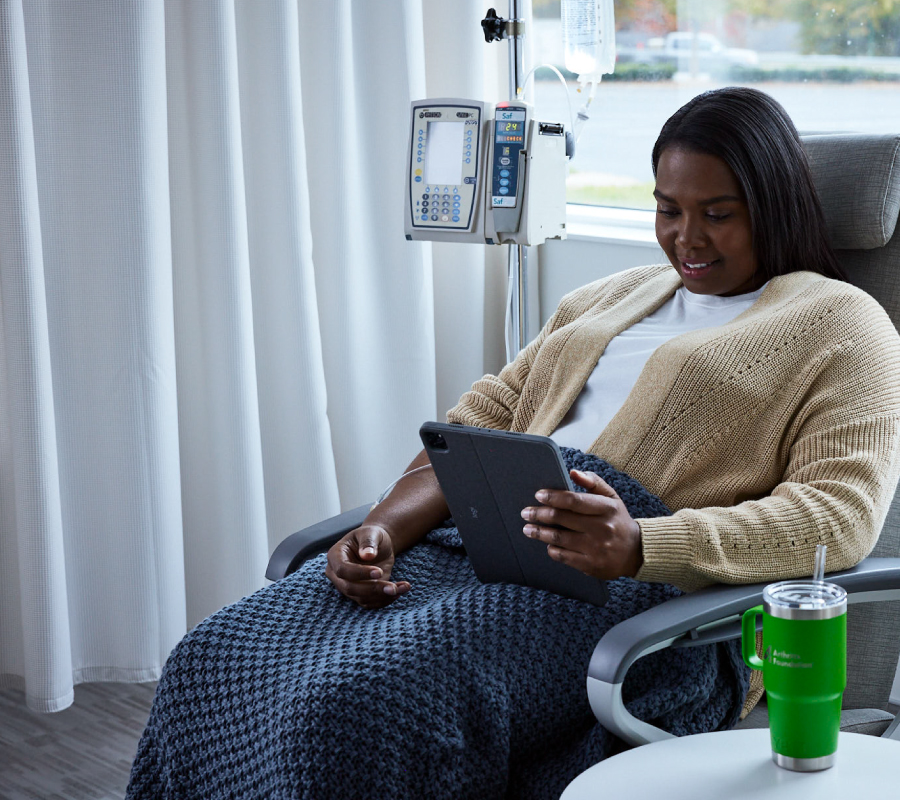Dolor articular durante la menopausia
Los investigadores examinan los posibles vínculos entre las hormonas y la artrosis.
Por Vandana Suresh | 16 de septiembre de 2024
En la segunda mitad de la tercera década de vida de una mujer, sus ovarios comienzan su viaje hacia un sueño profundo. Con el deterioro funcional de los ovarios, los niveles de estrógeno y progesterona también disminuyen de manera constante hasta la menopausia, lo que deja a las mujeres en mayor riesgo de tener ciertos problemas de salud, como artritis y osteoporosis. A pesar del papel fundamental que desempeñan las hormonas en el bienestar de la mujer, los efectos de la terapia hormonal (TH) en la salud de las articulaciones aún no se han estudiado a fondo.
La artrosis (OA) es igualmente prevalente entre hombres y mujeres hasta los 50 años, pero después se vuelve más común y grave en las mujeres. Las mujeres también tienen más probabilidades de tener que someterse a una cirugía de reemplazo articular para tratar la artrosis. Además, en las mujeres que toman medicamentos bloqueadores del estrógeno para el tratamiento del cáncer y las que están acercándose a la menopausia se intensifican la artritis y el dolor articular, lo que indica la importancia de las hormonas.
"El estrógeno es antiinflamatorio y sus receptores están en todo el cuerpo, incluidos los músculos, huesos, articulaciones, tendones y ligamentos", dice Jocelyn Wittstein, MD, profesora adjunta de Cirugía ortopédica en la Universidad de Duke. "Entonces, si sus niveles bajan, los huesos y las articulaciones no reciben tanto estrógeno, y esta supresión podría aumentar el dolor articular en las manos, los hombros y las rodillas, en realidad en cualquier articulación".
Se cree que comenzar a administrar TH en las mujeres ayuda a reducir los efectos adversos de la menopausia, incluida la artritis. Si bien se ha demostrado en algunos estudios, como el 2022 Women's Health Initiative (WHI), que la TH previene la pérdida ósea y reduce las fracturas en mujeres posmenopáusicas sin osteoporosis, no hay estudios similares sobre la artrosis en mujeres en transición a la menopausia. Sin embargo, un reexamen de los datos de las mujeres que continuaron con TH para los síntomas de la menopausia después de la conclusión del ensayo reveló que tendían a experimentar menos dolor en los huesos y las articulaciones.
"A las mujeres del estudio WHI solo se les preguntó si tenían dolor articular, por lo que las preguntas no estaban bien definidas", señala Anne Ford, MD, obstetra y ginecóloga de la Universidad de Duke. "Para comprender mejor el impacto de la terapia hormonal, es necesario hacer preguntas más específicas sobre el dolor articular y la artritis". Las doctoras Wittstein y Ford están trabajando juntos para abordar la brecha en el conocimiento y la atención de la artritis en las mujeres. Su objetivo es crear un registro que contenga datos de encuestas recopilados de mujeres: cómo son su estado menstrual, síntomas de la menopausia, dolor articular y localización, y si están recibiendo TH para sus síntomas y en qué dosis, entre otros tipos de información. Enfatizan que estos datos serán cruciales para evaluar la efectividad de la TH para la artritis menopáusica.
"Existe una gran intersección entre la salud de la mujer y la salud ortopédica", asegura la Dra. Wittstein. "Es importante que nosotros, como médicos, no trabajemos aislados unos de otros. Existe una disparidad significativa en la atención médica en cuanto al manejo de la artritis en pacientes masculinos y femeninos. Debemos colaborar en el cuidado de nuestros pacientes".
Aprovechar el potencial de la medicina regenerativa
Menopausia con una enfermedad reumática

Manténgase informado. Viva en el sí.
Participe en la comunidad de la artritis. Cuéntenos un poco acerca de usted y, de acuerdo a sus intereses, recibirá correos electrónicos con la información más reciente y los recursos necesarios para vivir una vida plena y para conectarse con otras personas.
